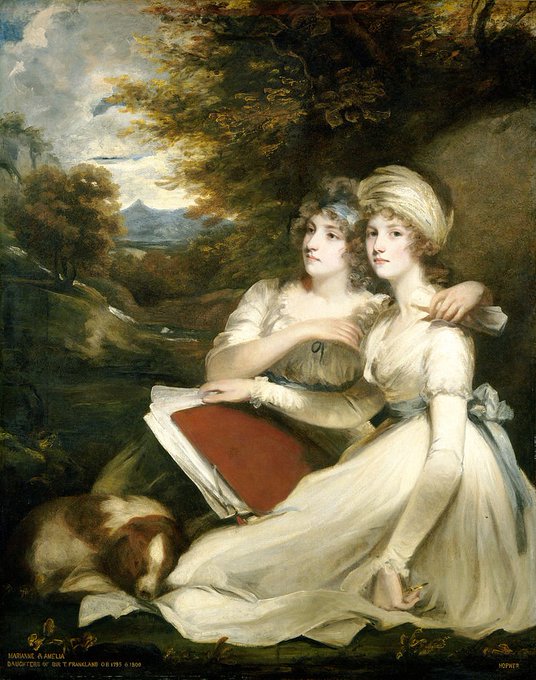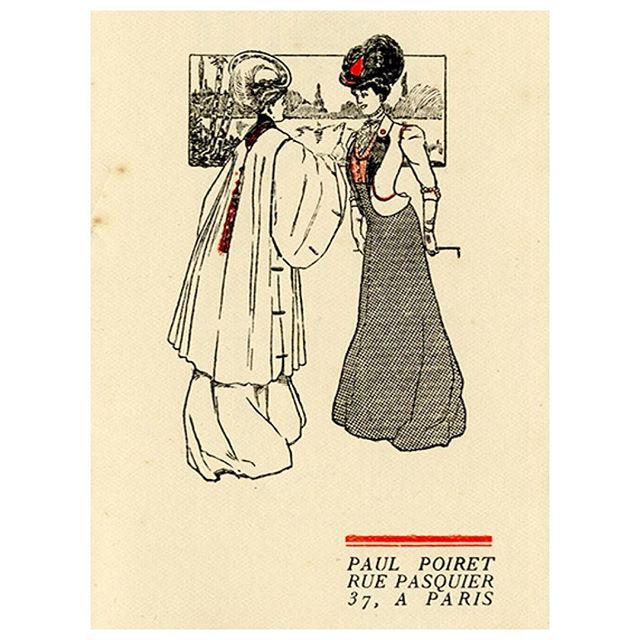FashionHistoryのTwitterイラスト検索結果。 147 件中 5ページ目
Original sketch for a pink satin evening gown by Hattie Carnegie, undated 1950s.
#fashion #fashionhistory #hattiecarnegie #fashionsketch #fitnyc #fitspecialcollections #fashioninstituteoftechnology #designarchives
Stylish gentleman: Esp. like the six-pointed stars repeated on the buttons of both waistcoat & coat - plus extra love for that carnelian pinkie ring. "Portrait of an English Architect" unsigned, 18thc English School @JohnMoranInc #fashionhistory
Today’s #cotd is a fancy dress costume from 1820. It’s an interesting regency interpretation of the renaissance, made of satin, glaze and silver trimmings. @KerryTaylorAuct #fridayfrills #fashionhistory.
In honor of my job @FieldofFirsts, today's #cotd is all to do with airplanes! There are three fashion illustrations and one excellently executed example of how aviation has been the inspiration for fancy dress since its beginning. #FashionHistory
Today's #cotd is Miss. Stevenson dressed as "Photography" to a fancy dress ball in Montreal in 1865. She took the idea from a fashion plate (like those pictured) Also, note that she is showing her ankles, something quite scandalous at the time. #FashionHistory
Portrait of the Frankland sisters by John Hoppner gives an idea of the styles of 1795. Hoppner achieved fame as a brilliant colorist and first exhibited at the Royal Academy in 1780. #arthistory #fashionhistory
#Hoppner
Eyes by Erté. Born Romain de Tirtoff in St. Petersburg in 1892, he began drawing costumes aged 5. Erté moved to Paris to work (very successfully) as a fashion illustrator & costume designer. His #ArtDeco style became popular again in the #1960s. He died in 1990.
#fashionhistory
The wild hairstyles of 1839! Note the “mechanical” brushes meant to deliver cleansing products for men’s beards w/out sullying one’s hands. Les Cent-Un Coiffeurs de Tous les Pas. #fashion #fashionhistory #fashionplates #hairdressing #hair #beards #barbers #fitnyc #designarchives
The Genoese Noblewoman (1625-1627) by Anthony Van Dyck reflects dress trends of the early 17th century, particularly in Genoa, such as rich silks ornamented with metallic lace, starched ruffs and the deep "V" shaped bodice.
#fashionhistory #arthistory
https://t.co/snwkFjZNjy
Puce: a colour favored by Marie Antoinette & popular in the late 18thc/ early 19thc. Puce is French for flea; the colour is described as resembling congealed blood or a flea after it’s been crushed on white linen— a familiar shade in its heyday. #FolkloreWords #fashionhistory
A charming little illustration by A. E. Marty found at the bottom of a page of the January 1920 issue of Gazette du bon ton. #fashion #fashionhistory #aemarty #gazettedubonton #1920 #fitnyc #fitspecialcollections #fashioninstituteoftechnology #designarchives
Dress by Elsa Schiaparelli, Fall 1951, sketch from the Bergdorf Goodman custom salon sketches. #fashion #fashionhistory #elsaschiaparelli #schiaparelli #bergdorfgoodman #1951 #50sfashion #fitnyc #fitspecialcollections #fashioninsituteoftechnology #designarchives
A stunning design by Madeleine Vionnet which was licensed by the American ready-to-wear manufacturer A. Beller & Co, c. 1928. #fashion #fashionhistory #vionnet #fitspecialcollections #fashioninstituteoftechnology #specialcollections #designarchives #speccoll
Did you know that American department stores used in-house designers to create original fashions for specific clients, advertising the garments exclusive to the store? Read the part 2 of our thematic essay to find out more!
#arthistory #fashionhistory
https://t.co/qqWOgYMzCs
This Poiret promotion underscores how he was creating styles reflecting the popular s-bend silhouette, a trend he would later claim to hate. From Costumes, for Paul Poiret's summer 1906 collection. #fashion #fashionhistory #poiret #paulpoiret #fitnyc #designarchives #speccoll
“Thank you... I thought it might be too much...?”
Was there such a thing as ‘too much’ for the eighteenth century gentleman when it came to choosing an impressive outfit?
Find out at our next lecture Tue 19th Feb @TheArtsSociety_ #18thcentury #georgian #fashionhistory #arts
Incredible sketch drawn for a #brooch designed by Seymour Moss, whose company MOBA created gold & gemstone “fashion jewelry."
#fashionhistory #jewelerydesign #seymourmoss #MOBA #speccoll #fitnyc #hummingbird #designarchives #jewelry
Mink evening wrap anyone? Original sketch by Muriel King, 1938.
#fashion #fashionhistory #fashionsketch #murielking #1938 #30sfashion #fashioninstituteoftechnology #speccoll
A rare 1837 fashion plate of a woman in a sporting ensemble featuring pants. It would be another 15 yrs before Bloomers emerged. Journal des dames et des modes, 1837.
#fashionhistory #journaldesdamesetdesmodes #sportswear #hunting #speccoll #fitnyc #designarchives







































